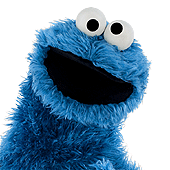Quick Lesson in Mathematics
For episodes 276 to 1055, the number featured can be determined as follows:
(step 1) Subtract 16 from the episode number, then divide by 130. This is the season number (starting with zero).
(step 2) To find the season-opening episode number, multiply the number obtained in (step 1) by 130 and add 16.
(step 3) Subtract the season-opening number (step 2) from the episode number. Divide by 11. The number sponsoring that show: the remainder plus 2.
Example: #871 (a Noggin ep. from the 75-76 season; Q-Y-11)
(871-16)/130 = 6 [6+1969=1975]
6 * 130 + 16 = 796
871-796=75
75/11=6 r 9
9+2=11
Also verified for the 76-77 Noggin eps. 1037 (E-F-3) and 1041 (K-Z-7).
The 77-78 Hawaii eps. make less sense. The number on 1090 should have been 3, according to this rule.
I know that since (at least) the 86-87 season, letters and numbers were purely random, with no pattern at all.
I am trying out this math equation with the Season 13 premiere, but I cannot seem to get the result, which should be 12.
I know there should be an equation, as there were strings of consecutive episodes with ascending numbers (reverting back to as early as 2, after 12).
I am thinking that, from 1986-87 season onward, randomization of sponsored numbers was likely computer-generated, it seems.
I actually wonder if an episode's fresh sponsored letter has a calculation as well? Traditionally, if a sponsored letter is used for two days straight, that letter on the first of the episodes would be the majority letter (more segments than the other sponsored letter), and if that same letter is used on the next episode, it is designated the minority letter (traditionally two segments max for that letter in the latter case).
The first couple of months of episodes in Season 16 (excluding reruns) had pairs of consecutive letters, but as per Unpaved episode from late-February 1985, it appeared that pairs of non-consecutive letters started to become the norms again. It's like reliving the first many weeks of Season 11, and I was never a fan of constant pairs of consecutive letter sponsors. I love variety.
 Welcome to the Muppet Central Forum!
Welcome to the Muppet Central Forum!
.jpg) Christmas Music
Christmas Music
 Sesame Street debuts on Netflix
Sesame Street debuts on Netflix
 Back to the Rock Season 2
Back to the Rock Season 2
 Sam and Friends Book
Sam and Friends Book
 Jim Henson Idea Man
Jim Henson Idea Man
 Bear arrives on Disney+
Bear arrives on Disney+
